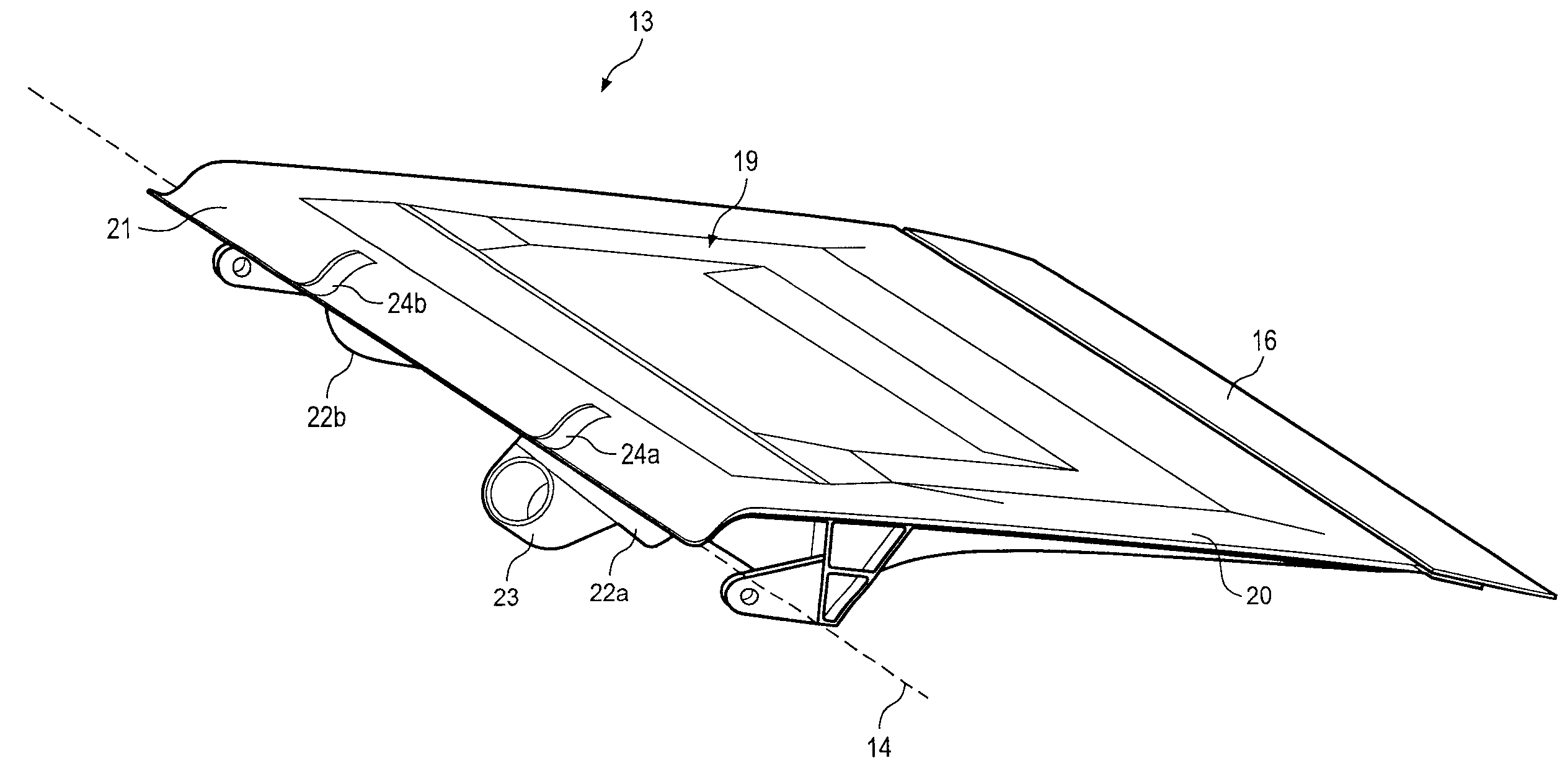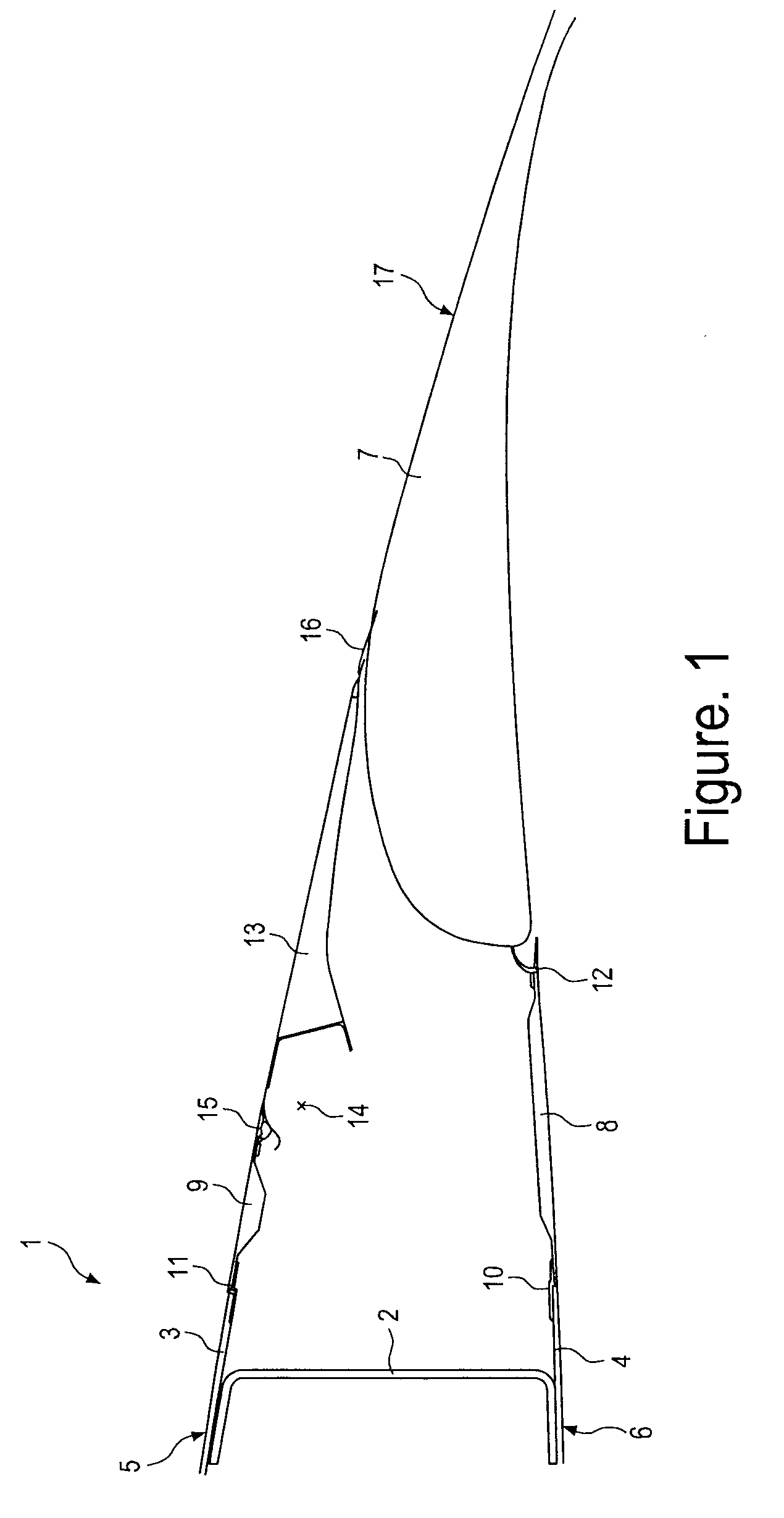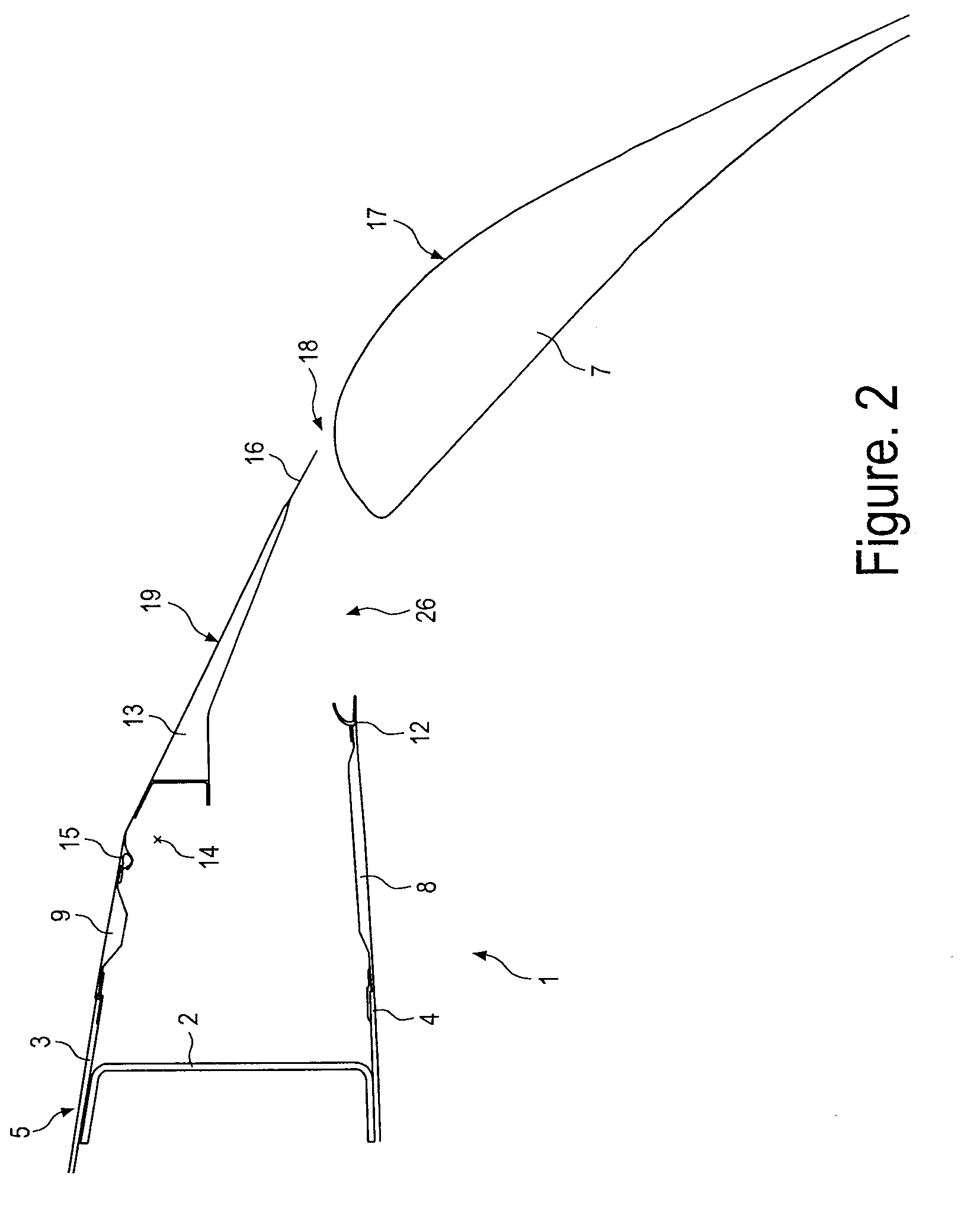Cross-bleed dam
a technology of cross-bleed dam and cross-bleed, which is applied in the direction of fuselage, mechanical equipment, transportation and packaging, etc., can solve the problems of increased parasitic drag, poor performance of the drop hinge flap, and impact on the lift performance, so as to enhance the seal protection and improve the effect of sealing
- Summary
- Abstract
- Description
- Claims
- Application Information
AI Technical Summary
Benefits of technology
Problems solved by technology
Method used
Image
Examples
Embodiment Construction
[0027]FIG. 1 shows a cross section through an aircraft wing trailing edge. The wing includes a fixed wing portion 1 comprising a rear spar 2, an upper wing cover 3 and a lower wing cover 4. Outer surfaces of the upper and lower wing covers 3, 4 form upper and lower aerodynamic surfaces 5, 6, respectively.
[0028]A trailing edge drop hinge flap 7 is mounted to the fixed wing portion 1 by a drop hinge mechanism (not shown). A lower trailing edge panel 8 and an upper trailing edge panel 9 form part of the overall wing profile and may be removed to access the drop hinge flap mechanism. The lower trailing edge panel 8 is connected to the lower wing cover 4 by a butt-strap 10, and the upper trailing edge panel 9 is connected to the upper wing cover 3 by a butt-strap 11. A seal member 12 seals between the lower trailing edge panel 8 and the flap 7 when the flap is in its retracted position as shown in FIG. 1.
[0029]A drooping spoiler 13 is pivotally connected to the fixed wing portion 1 and i...
PUM
 Login to View More
Login to View More Abstract
Description
Claims
Application Information
 Login to View More
Login to View More - R&D
- Intellectual Property
- Life Sciences
- Materials
- Tech Scout
- Unparalleled Data Quality
- Higher Quality Content
- 60% Fewer Hallucinations
Browse by: Latest US Patents, China's latest patents, Technical Efficacy Thesaurus, Application Domain, Technology Topic, Popular Technical Reports.
© 2025 PatSnap. All rights reserved.Legal|Privacy policy|Modern Slavery Act Transparency Statement|Sitemap|About US| Contact US: help@patsnap.com



